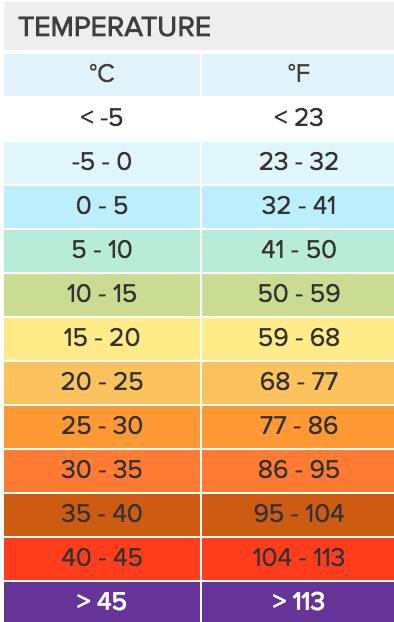Australian Government Bureau of Meteorology
New South Wales
Marine Wind Warning Summary for New South Wales
Issued at 10:00 PM EDT on Friday 28 March 2025
for the period until midnight EDT Saturday 29 March 2025
Wind Warnings for Saturday 29 March
Gale Warning for the following areas:
Macquarie Coast, Hunter Coast, Sydney Coast, Illawarra Coast, Batemans Coast and Eden Coast
Strong Wind Warning for the following areas:
Byron Coast and Coffs Coast
The next marine wind warning summary will be issued by 4:10 am EDT Saturday.
================================================================================
Check the latest Coastal Waters Forecast or Local
Waters Forecast at http://www.bom.gov.au/nsw/forecasts/map.shtml for information on wind,
wave and weather conditions for these coastal zones.
================================================================================
Forecast
Sydney Airport (33.9442°S, 151.1828°E, 4m AMSL) set as my default location ›
-
My MLA
-
Current condition
TODAY20° 23° heavy rain Chance of rain: 90% Likely amount: 20-40mm First
light

Last light Sunrise Sunset 6:40am EDT 7:05am EDT 6:55pm EDT 7:20pm EDT NOW19.5° Feels Like: 19.1° Relative Humidity: 91% Dew: 18.0° Wind: SW 17km/h Gust: 19km/h Rainfall since 9am: 4.8mm Pressure: 1014.6hPa -
Today Weather
Sydney AirportNow19.1°cFeels Like:20.4°Wind:S 9km/hGusts:11km/hHumidity:98%20°Min23°MaxToday in Sydney AirportCloudy. Very high chance of rain. The chance of a thunderstorm. Heavy falls possible. Winds NE/SE 15 to 20 km/h tending SE/SW 15 to 25 km/h before dawn then becoming SW 15 to 20 km/h in the late evening.Tomorrow19°Min25°MaxCloudy. High chance of showers. Winds W 15 to 20 km/h turning SW 30 to 45 km/h in the morning. -
Radar
-
Popup Radar
-
Warnings
-
7 day forecast
Today: Cloudy. Very high chance of rain. The chance of a thunderstorm. Heavy falls possible. Winds NE/SE 15 to 20 km/h tending SE/SW 15 to 25 km/h before dawn then becoming SW 15 to 20 km/h in the late evening.
Forecast for Sydney Airport (33.9442°S, 151.1828°E, 4m AMSL) Sat Sun Mon Tue Wed Thu Fri Summary Minimum 20° 19° 19° 16° 16° 16° 17° Maximum 23° 25° 24° 24° 24° 27° 26° Chance of rain 90% 70% 50% 30% 90% 70% 30% Likely amount 20-40mm 1-5mm 1-5mm 1-5mm 5-10mm 1-5mm < 1mm UV index Very High High High High High High High Fire Danger Rating No Rating No Rating No Rating No Rating - - - Frost risk Nil Nil Nil Nil Nil Nil Nil 9am 3pm 9am 3pm 9am 3pm 9am 3pm 9am 3pm 9am 3pm 9am 3pm Wind speed 13
(km/h)22
(km/h)32
(km/h)48
(km/h)33
(km/h)44
(km/h)25
(km/h)37
(km/h)11
(km/h)19
(km/h)14
(km/h)20
(km/h)12
(km/h)19
(km/h)Wind direction NW WSW SW SW SW SW SW SSW WNW SE WSW S W SE Relative humidity 98% 90% 85% 71% 78% 64% 69% 54% 75% 61% 83% 60% 71% 52% Dew point 20°C 20°C 18°C 18°C 16°C 15°C 13°C 13°C 14°C 15°C 16°C 18°C 14°C 14°C -
28 Day Rainfall forecast
-
12 Month Rainfall Forecast
Sydney Airport Rain Forecast
Sydney Airport 12-month Rainfall ForecastMarAprMayJunJulAugSepOctNovDecJanFeb20252026987778854748105012 - 34 - 78 - 910Well below normalBelow normalNear normalAbove normalWell above normalIssue Notes - Issued Mar 28
ENSO status: Weak La Niña-like conditions. IOD status: Neutral. SAM status: Neutral. The El Niño Southern Oscillation (ENSO) is in a weak La Niña-like pattern. The US declared a La Niña event this summer, but this event has not met the BoM definition, and will likely end in the coming weeks. A La Niña typically increases rainfall over northern and eastern Australia, while reducing rainfall over southern coastal Australia and western Tas. The Indian Ocean Dipole (IOD) is in a neutral phase and does not play a part in Australia's climate during this time of year. The Southern Annular Mode (SAM) is in a neutral phase. Forecasts show a tendency towards the positive phase in autumn, with the long-wave pattern indicating that cold fronts are a bit less likely for Australia's longitudes over the next few months. During autumn, a positive SAM increases rainfall over most of eastern Australia, and decreases rainfall for SA, Vic and western Tas. Rainfall outlooks are showing above average rainfall across much of northern Australia in April due to lingering monsoon activity. Above average rainfall is expected for the NSW coast through autumn, with wetter conditions also developing over western WA from late autumn. SA, Vic and Tas are expected to be average to slightly below average, with average conditions elsewhere.
-
Popup - Daily historical
-
Long range rainfall forecast
-
Past 5 Days
Sydney Airport Past 5 Days
This MonthMinimum Maximum Rainfall Monday
Mar 2419.5 °C 27.1 °C 2.0 mmTuesday
Mar 2520.7 °C 27.2 °C 0.0 mmWednesday
Mar 2620.0 °C 28.4 °C 1.8 mmThursday
Mar 2718.7 °C 27.0 °C 0.0 mmFriday
Mar 2819.4 °C 25.9 °C 8.0 mmLegend -
Almanac
Almanac
Sydney Airport minimum temp history (33.9442°S, 151.1828°E, 4m AMSL) MAXIMUM TEMPERATURE MINIMUM TEMPERATURE Hottest this month 39.3° 16/03/2025 Coldest this month 15.4° 18/03/2025 Hottest on record 41.2 09/03/1983 Coldest on record 7.4 24/03/1967 Hottest this year 42.5° 28/01/2025 Coldest this year 14.3° 17/02/2025 Long term average 25.4° Long term average 17.7° Average this month 27.8° Average this month 19.9° Hottest March On Record Avg. max. temp. 28.4° 1940 Coldest March on record Avg. min. temp. 15.1° 1944 Sydney Airport rainfall history (33.9442°S, 151.1828°E, 4m AMSL) RAINFALL Wettest This Month 20.4mm 11/03/2025 Total This Month 55.0mm
12.0 daysLong Term Average 122.9mm 12.7 days Wettest March on record 393.0mm 1975 Driest on record 6.4mm 1965 -
Year to Date
Sydney Airport Year To Date
Average Rainfall To Mar 335.2mm 35.7 day(s) Total For 2025 260.4mm 38.0 day(s) Total To This Day 2024 262.0mm 30.0 day(s) Wettest Day 37.2mm Jan 9 Lowest Temperature 14.3°C Feb17 Highest Temperature 42.5°C Jan28 -
Popup - Radar
Weather Radar for Australia
Australia Radars
- Adelaide
- Adelaide Airport
- Adelaide Sellicks
- Albany
- Alice Springs
- Bairnsdale
- Bowen
- Brewarrina
- Brisbane
- Brisbane Airport
- Brisbane Marburg
- Broadmeadows
- Broome
- Cairns
- Cairns Airport
- Canberra
- Carnarvon
- Ceduna
- Coffs Harbour
- Dampier
- Darwin
- Darwin Airport
- Emerald
- Esperance
- Eucla
- Geraldton
- Giles
- Gladstone
-
Popup - Monthly historical
-
Climatology
Climate History
Sydney Airport Climatology
Sydney Airport Long-Term Averages
Long-Term Averages Jan Feb Mar Apr May Jun Jul Aug Sep Oct Nov Dec Ann Mean Max (°C) 26.7 26.5 25.4 23.0 20.2 17.7 17.2 18.5 20.8 22.8 24.2 26.0 22.4 Mean Min (°C) 19.0 19.2 17.7 14.4 11.1 8.8 7.4 8.4 10.7 13.4 15.6 17.7 13.6 Mean Rain (mm) 94.7 117.6 122.9 107.6 97.3 125.2 72.4 74.8 59.3 71.3 81.6 73.0 1094.5 Mean Rain Days 11.4 11.6 12.7 11.2 10.9 11.4 9.4 9.0 9.3 10.7 11.3 10.6 129.3



